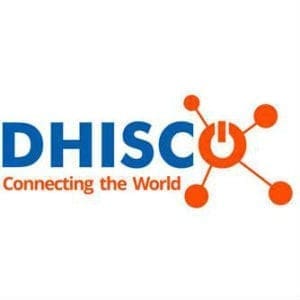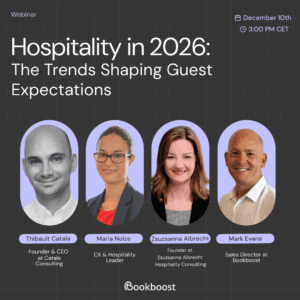 Traditionally, multicultural marketing campaigns managed by international media practitioners are developed through the combined efforts of a client-account team and their location-based creative networks. These in-country networks are entrusted to produce culturally appropriate and language-friendly content and media assets relevant to the local markets in their respective locations.
Traditionally, multicultural marketing campaigns managed by international media practitioners are developed through the combined efforts of a client-account team and their location-based creative networks. These in-country networks are entrusted to produce culturally appropriate and language-friendly content and media assets relevant to the local markets in their respective locations.
For example, a media practitioner leading campaigns in Asian markets would involve their creative teams based in Asia. Here, although strategies and campaign directions will be centrally managed, preparations for each market’s campaign elements (editorial content and post-production) are performed and fulfilled by decentralized creative teams, taking advantage of their local knowledge. Finished or semi-finished content assets are then delivered to the client’s account team, to be assembled and made ready for the campaign launch.
In the face of widespread globalization, creative media practitioners have initiated massive consolidations through mergers and acquisitions. Two key groups have emerged. The first consists of very large groups such as WPP, Omnicom, Publicis Groupe, etc., who have become holding establishments. The second are renowned consultants such as IPG, Dentsu, Havas, etc., who have also grown extensively by acquiring networks in various country locations, primarily for their ‘onsite’ presence and ability to offer the respective groups immediate access to vital location-base knowledge. It is normal for their overseas-based networks to upsize or downsize according to their group’s business cycle, which is also somewhat linked to their client’s business cycle in those territories.
The IoT have introduced new perspectives for multicultural content to be almost simultaneously developed and ready for dissemination at a much greater speed and fulfilled at a cost much lower than was possible a decade ago. With the convergence of wireless technology and content applications, as well as broader data transmission bandwidths, creative media assets are conveniently uploaded and downloaded, while contents in multiple languages can be vetted, proofed and even approved online. Indeed, it has offered content developers more convenience and flexibility to directly leverage multiethnic resources working in their respective home-countries.
Customization of content for various target markets can also be fulfilled through ‘co-sourcing’ with the right LSP (Language Service Provider). This may seem surprising, but already there are marcom teams of many large enterprises as well as global marketing agencies working with LSPs – partnerships that have lead to greater efficiency in the management of multicultural media projects and dissemination of publicity information in shorter times-to-market.
While not every creative development process is addressable through this avenue, LSPs have proven to be a lower cost alternative for the customization and production of editorial assets exclusively reedited for each specific native audience. Here, key considerations are that a well-structured LSP has fundamental strength in managing multicultural resources; they are able to initiate location-base research; they are adept at offering transcreation (creative translation infused with copywriting); they have wide experience in developing content that is inspiring and engaging, and they can finalize respective target language versions in almost any format appropriate for online or offline mediums. Not only can these LSPs deliver work with efficiency, they will contribute a total package that enables marcom teams or their media practitioners to operate more productively.
Why?
First, media concepts and content directions, once finalized, can be use as the ‘Source’ (refers to campaign strategy, editorial, media assets, etc.) to develop the other market’s content assets. With their concepts and strategy in place, creative design elements would become less critical. What is critical is for each market’s contents to be aptly adapted to the objectives of the Source, and to be equally impactful and appropriate to the cultural milieu of their respective target audiences.
Second, onsite creative teams are known to be working with their local translation agency or freelance bilingual editors (due to staff capacity or a lack of subject expertise). In such cases, the onsite creative team’s role during the content localization workflow has shifted to that of a project coordinator. Comparatively, LSPs do have project teams consisting of bilingual editors, native web page or print artwork artists that work together regularly and are capable of independently fulfilling the requirements of localized media assets or target content.
Third, consider campaigns that are required to be in four, five or six languages. The onsite creative team has to deal with several groups of translators and proofreaders on a wide range of linguistic issues such as: industry-specific terminologies, tracking changes and revisions, reediting and customizing contents to suit the ‘new’ target readers, solving texts display entropy due to space constraint or improper breaks that render words or phrases meaningless, etc. On the other hand, LSPs are organically structured to undertake multiple language content activities as well as provide a single-point liaison in managing the respective resources involved in the linguistic food chain.
Arguably, translation and multicultural content workflows are just not the everyday activities of the traditional creative design teams. Hence, media practitioners that work with LSPs operating with a network of in-country native resources and project management teams are likely to fulfill multicultural contents at shorter lead-times and at a significantly lower production cost.
Some of the areas this partnership has help addressed are:
Audience research
Though research is often time consuming, it is a necessary activity that allows the ‘see and feel’ to evaluate market segments for their peculiarities as well as relationships with the product or service. Importantly, research helps determine the right localization strategy. The purpose is to understand the demographics, psychographics and sociological classifications of the target audiences, as well as the cultural nuances common to the client’s product or service.
Content customization
To reach multicultural audiences, marketers should consider a two-prong approach, namely management of respective creative elements to develop the Source, and the creation of customized language versions by adapting from the Source. With the proliferated use of websites that have become vital marketing infrastructures, companies are now enjoying a centrally controlled and versatile media platform. Not only do they offer immediate dissemination of information on a global scale, they are also able to disseminate customized content that is exclusively localized for specific groups of native-language speaking audiences.
Hence, I strongly believe that media practitioners who collaborate with LSPs will benefit from having better concentration in providing creative expertise to their clients, in conceptualizing how content should be aligned, and stronger focusing on planning and initiating campaign launches.
For example, every service or consumer-based enterprise is constantly challenged to keep business and product information relevant and updated for their respective target audiences. Imperatively too, enterprises must have the right marketing strategy to stay relevant to changes in global market trends. These challenges are even more complex in Europe or the Asia-Pacific regions where there are significant cultural and language diversities.
Cultural connectors
Cultural connectors cover race, religion, language, social status, lifestyle, gender orientation, etc. They have substantial implications for blending-in with key groups and to win and retain favorable influences on local communities at large. The way each of these key groups ‘view’ the product or service can generally influence how individuals perceive the company that is behind the product or service offered. Every advertising practitioner understands this important rule. In a multicultural landscape, it is equally important too that the customized content achieves the right cultural connectors.
Out-sourcing vs. co-sourcing
Out-sourcing is defined as getting work done externally. Here, it is necessary to distinguish that although one has the required skills and resources to accomplish the work internally, it is considered more economical to have it done externally. In multicultural content developments, out-sourcing itself may not be the right solution if one is not adequately familiar with its multi-faceted processes. As a service profession, content localization involves unique workflow processes and procedures such as, terminology research, copywriting in bi-directional languages, multilingual software, fonts, inspecting content entropy, verifying integrity on quality display, etc. In all fairness, these are mostly activities that marcoms or creative teams are less accustomed to. Hence, co-sourcing is a wiser option.
My personal view is that the roles and the functions of creative media teams are irreplaceable. But in essence, it is the present time capabilities of LPSs in localizing and populating information online or through various content management systems that should not be ignored. It offers new perspectives and scope, albeit, has been less adopted as compared to the traditional approach by the creative industry at large. I strongly believe that with good creative instincts from media practitioners and the collaboration with LSPs, multicultural contents can be managed with less stress, completed in a shorter timeframe and will provide better returns for all.
About the author
 Joanne Chan is a Regional Business Director of IPPWORLD, an end-to-end provider of derivative language content developed through transcreation (translation infused with creative writing), as well as support for the administration of CMS populated with multiple language contents. IPPWORLD is contracted by hotel and hospitality establishments, has collaborative relationships with media practitioners and is gaining recognition for its expertise in customization of media content for multicultural markets.
Joanne Chan is a Regional Business Director of IPPWORLD, an end-to-end provider of derivative language content developed through transcreation (translation infused with creative writing), as well as support for the administration of CMS populated with multiple language contents. IPPWORLD is contracted by hotel and hospitality establishments, has collaborative relationships with media practitioners and is gaining recognition for its expertise in customization of media content for multicultural markets.















